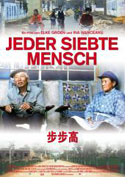

Opening 31 Jul 2008
Directed by:
Elke Groen
Writing credits:
Elke Groen, Ina Ivanceanu
Supposedly, every seventh person in the world lives in a Chinese farm village. For this Austrian-Luxemburg co-production, directors Elke Groen and Ina Ivanceanu spent three years visiting Chinese villages to record the lives of the farmers. Often they turned their camera over to a local resident, who proudly filmed his achievement: a washing machine, or his friends. All of them believed that life for their children would be better; education was highly rated. Otherwise, the three villages were quite different and representative of the diversity in China. Beisuzha was the shining example of a Communistic success, winning all the prizes for model village. Everyone had enough; the crops were huge; the people participated in the government; they upheld the one-child policy. The smallest village with just over 500 residents was San Yuan. The people spoke their own language called Naxi, had ethnic costumes and prayed to their own water gods. Compared to Beisuzha, they were poor. Recently, an investor had bought up much of their land in order to build a deer park, hoping to attract tourists to the area. In Jiangjiazhai people moved into government housing after having spent years in caves they had dug themselves. Farming could not feed everyone, so the able-bodied worked in the towns, leaving the village a ghost town of grannies and children. People reminisced about the Cultural Revolution and the Communistic idea of group ownership, and all had great faith in the future. Often I was reminded of the film Balzac and the Little Chinese Seamtress. That was fiction; this is real. Soon the number of tractors, phones, cars, televisions, and washing machines will grow far beyond anyone’s expectations. (Becky Tan)